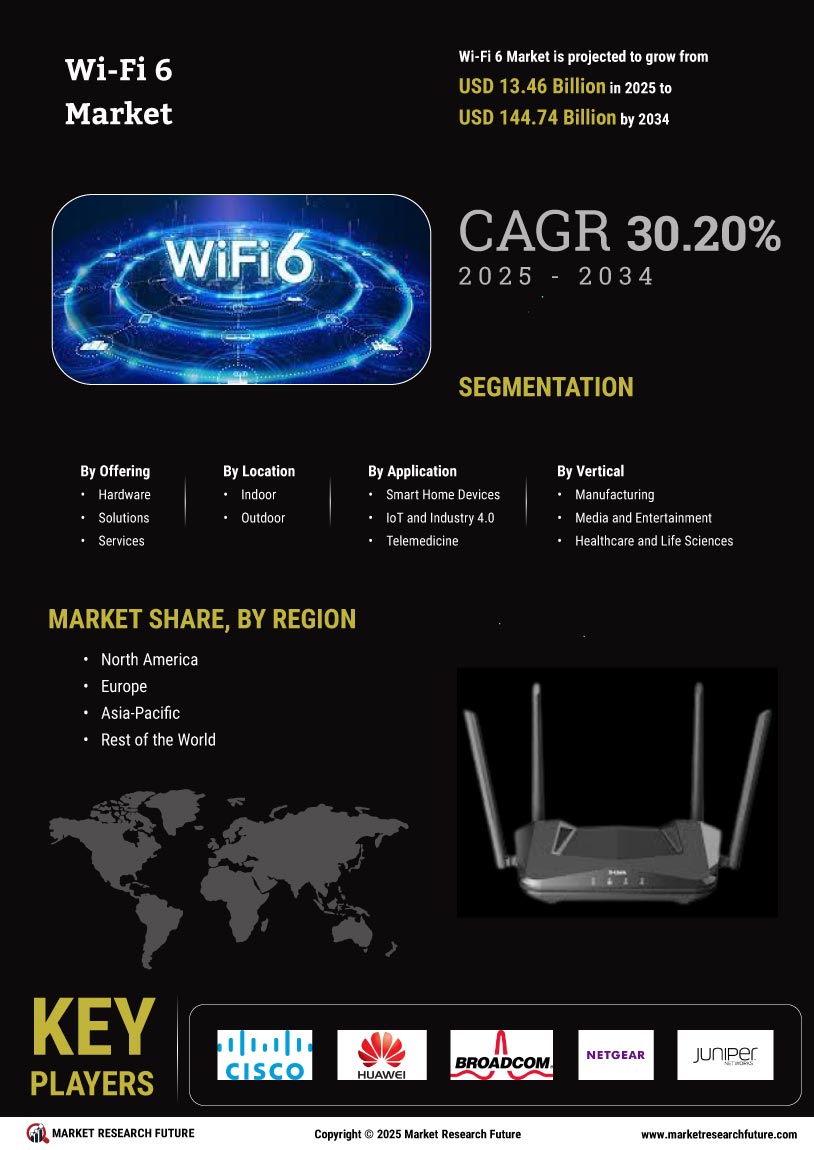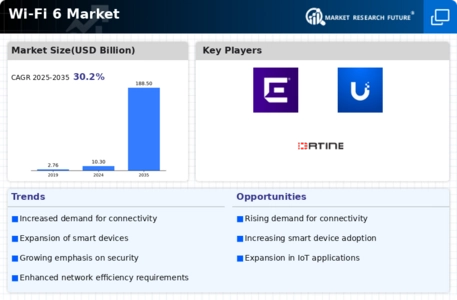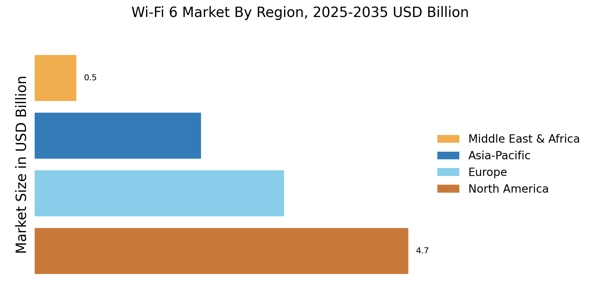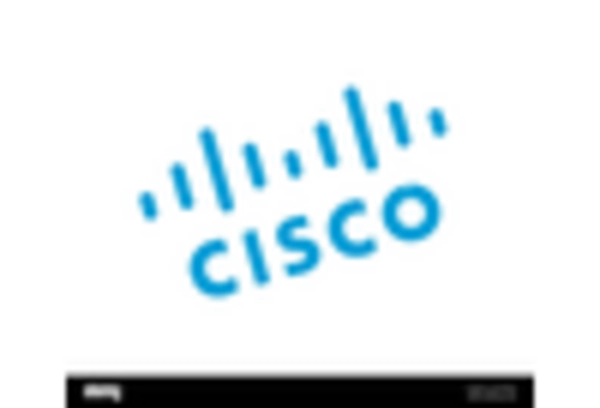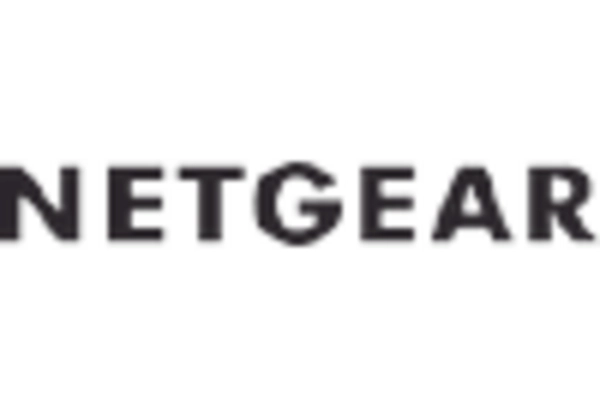Emergence of IoT Applications
The emergence of Internet of Things (IoT) applications significantly shapes the Wi-Fi 6 Market Industry. As industries increasingly integrate IoT devices into their operations, the demand for high-capacity and efficient wireless networks rises. Wi-Fi 6 technology is designed to handle the unique challenges posed by IoT, such as managing numerous devices simultaneously. Market forecasts indicate that the IoT market is projected to reach over 1 trillion dollars by 2025, further driving the need for advanced networking solutions. This trend suggests that the Wi-Fi 6 Market Industry will play a crucial role in supporting the infrastructure required for IoT applications, thereby fostering innovation and growth within various sectors.
Rise of Smart Home Technologies
The proliferation of smart home technologies significantly influences the Wi-Fi 6 Market Industry. As consumers increasingly adopt smart devices such as thermostats, security cameras, and lighting systems, the demand for a reliable and high-capacity wireless network escalates. Wi-Fi 6 offers enhanced performance, allowing for seamless connectivity among numerous smart devices. Market data indicates that the smart home market is expected to grow at a compound annual growth rate of over 25% through 2025. This growth directly correlates with the adoption of Wi-Fi 6, as consumers seek to ensure their networks can handle the increased load. Thus, the Wi-Fi 6 Market Industry stands to benefit from this trend, as more households transition to smart home ecosystems.
Advancements in Streaming Services
Advancements in streaming services contribute to the growth of the Wi-Fi 6 Market Industry. As consumers increasingly turn to high-definition and 4K streaming content, the demand for faster internet speeds and lower latency becomes critical. Wi-Fi 6 technology, with its enhanced data transfer capabilities, is well-positioned to support these demands. Recent statistics indicate that streaming services are expected to grow by over 20% annually through 2025, further emphasizing the need for robust wireless networks. This trend not only drives consumer adoption of Wi-Fi 6 but also encourages service providers to enhance their offerings. As a result, the Wi-Fi 6 Market Industry is likely to experience significant growth as it aligns with the evolving landscape of digital content consumption.
Growing Demand for High-Speed Internet
The Wi-Fi 6 Market Industry experiences a notable surge in demand for high-speed internet connectivity. As more devices become interconnected, the need for faster and more reliable internet access intensifies. According to recent data, the number of connected devices per household is projected to reach 25 by 2025, necessitating advanced networking solutions. Wi-Fi 6, with its ability to support multiple devices simultaneously without compromising speed, appears to be the solution to this growing demand. This trend is particularly evident in urban areas where high-density living conditions amplify the need for robust internet infrastructure. Consequently, the Wi-Fi 6 Market Industry is likely to witness substantial growth as consumers and businesses alike seek to upgrade their networks to accommodate this increasing demand.
Increased Focus on Remote Work Solutions
The shift towards remote work solutions has a profound impact on the Wi-Fi 6 Market Industry. As organizations adapt to flexible work arrangements, the demand for reliable and high-speed internet connectivity becomes paramount. Wi-Fi 6 technology, with its ability to provide enhanced performance in congested environments, is well-suited to meet the needs of remote workers. Data suggests that nearly 30% of the workforce is expected to remain remote by 2025, driving the necessity for robust home networking solutions. This trend not only boosts the adoption of Wi-Fi 6 but also encourages businesses to invest in infrastructure that supports remote work capabilities. Consequently, the Wi-Fi 6 Market Industry is likely to see increased investments and innovations aimed at enhancing remote work experiences.
